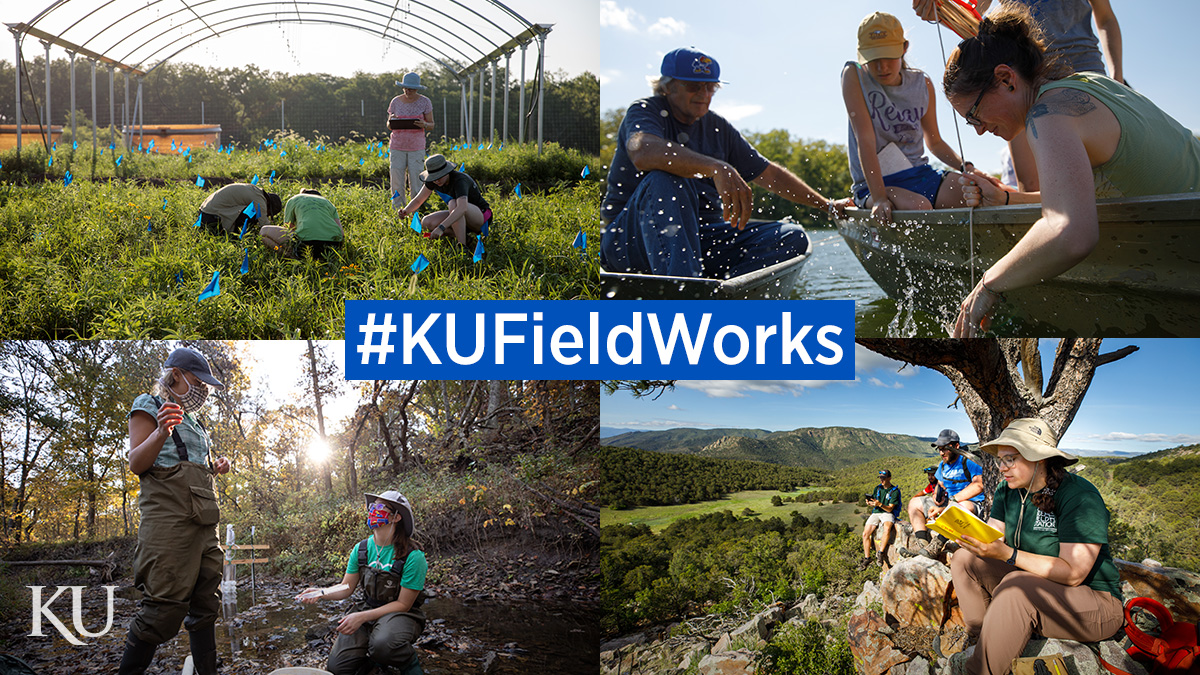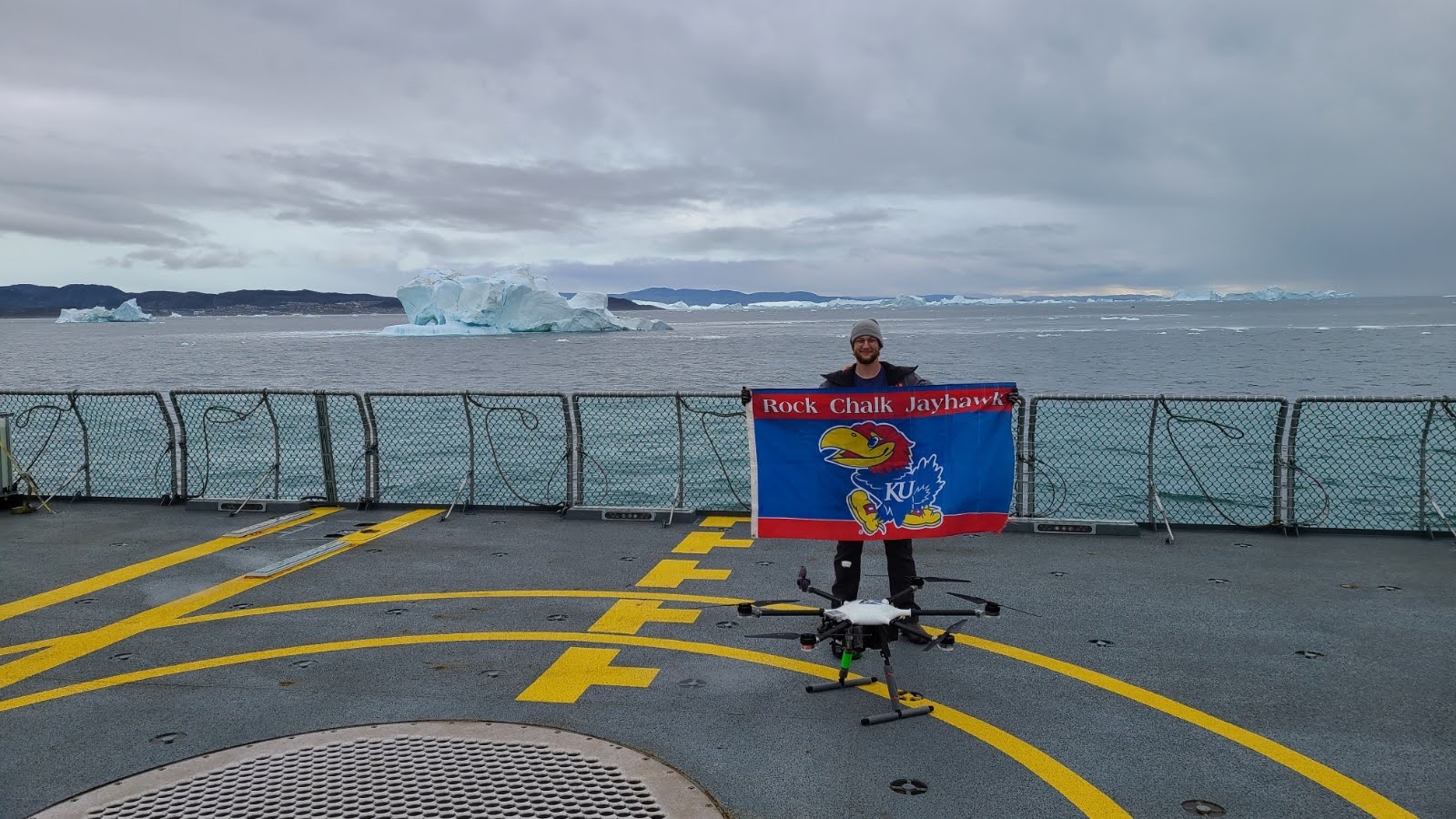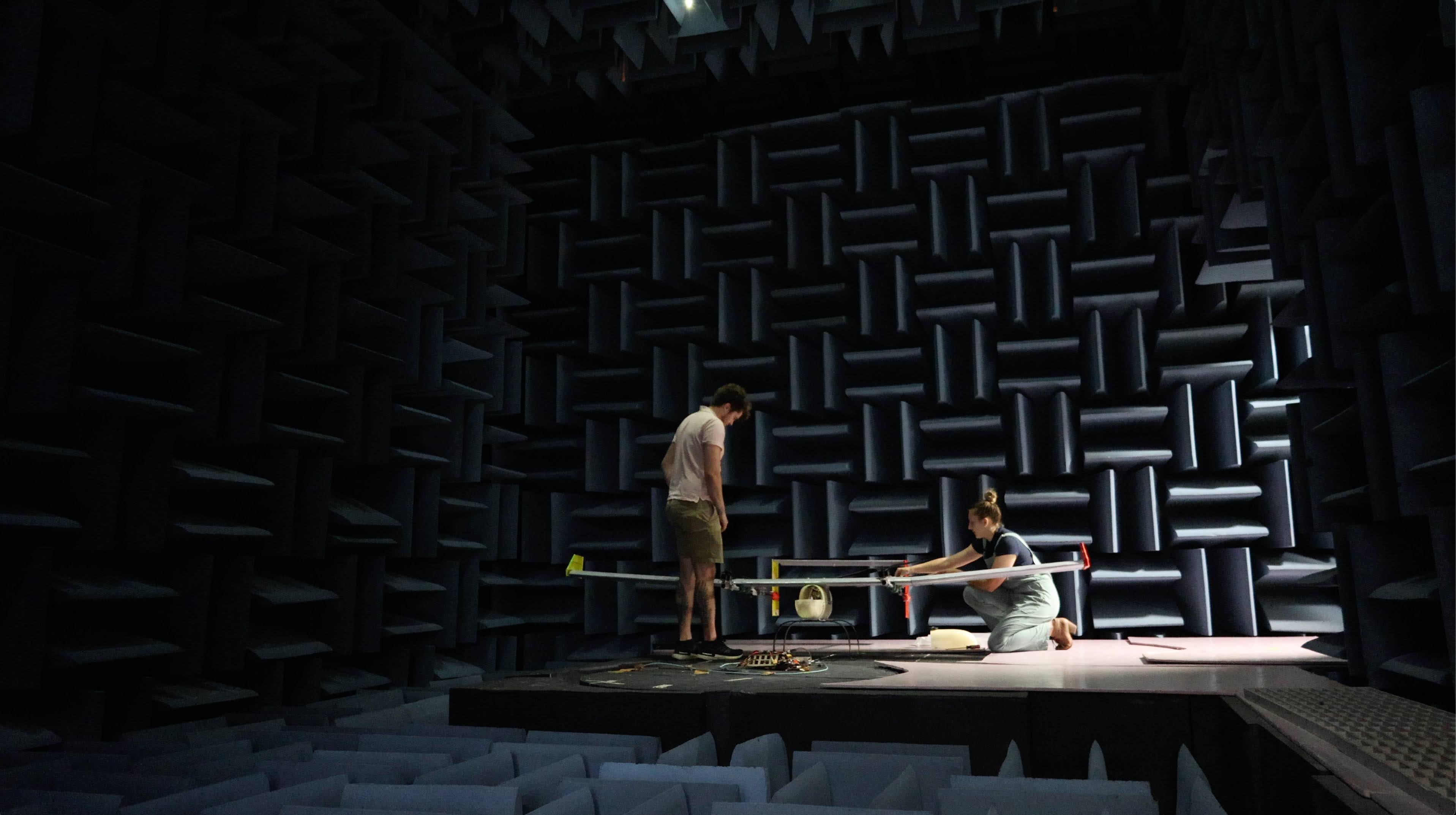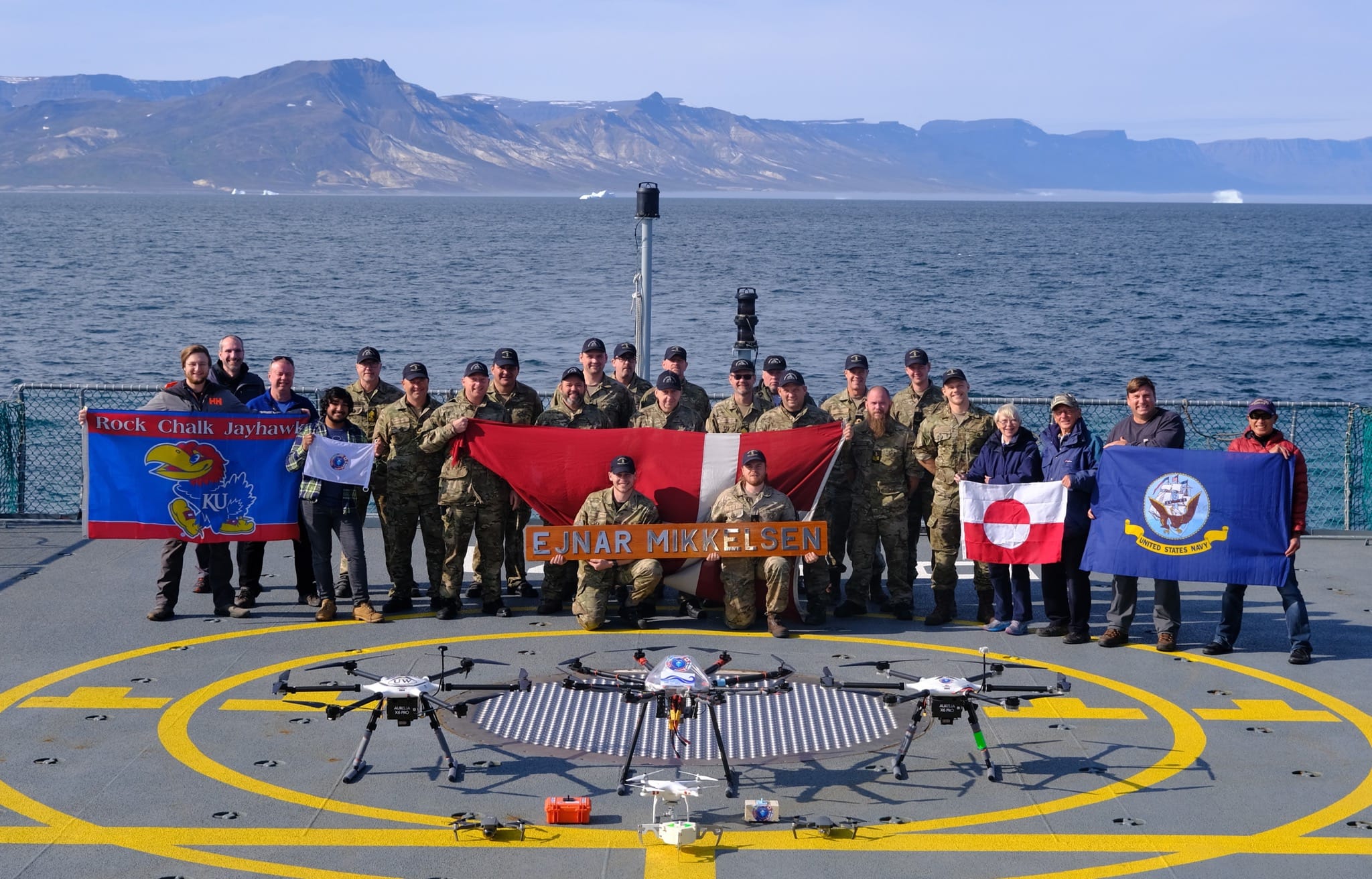#KUFieldWorks: Flight testing aerial systems and geo-tagging icebergs in Greenland

Editor’s note: Fieldwork provides invaluable insights about real-world environments and processes, expanding and reinforcing what researchers learn in classrooms, labs and collections. KU faculty, staff and students across a spectrum of disciplines are taking their inquiry directly to rivers, prairies, dig sites, glaciers, islands, burial grounds and more this summer. Through the #KUFieldWorks series, we'll join them on their adventures.
Q&A with aerospace researchers Anastasia Byrd + Alex Zugazagoitia
The Garrison Flight Research Lab at the University of Kansas conducts autonomous aircraft test flights on its designs, which took aerospace engineering senior Alex Zugazagoitia to Greenland this summer to geo-tag icebergs.
Geo-tagging secures geographic information to the icebergs, allowing scientists to remotely track the movements of the large floating masses of ice that have detached from glaciers, compare them to simulations, and prevent shipwrecks in the future.
Zugazagoitia and a team from the University of Washington, the Office of Naval Research, and the Danish Meteorological Institute spent a week on the Danish Navy vessel in Disko Bay geo-tagging icebergs. The trip was part of a polar research collaboration between KU’s Center for Remote Sensing of Ice Sheets and the Office of Naval Research. The lab uses autonomous aircrafts to validate and verify guidance, navigation, and control logic and artificial intelligence controllers; collision avoidance algorithm testing; and remote-sensing platform testing.
Faculty, graduate and undergraduate researchers participate in the work of the lab, which includes conducting their own research and test flights. School of Business MBA student Anastasia Byrd is the lab’s project manager, a role in which she leads operations and establishes team dynamics to ensure timely projects.
The flight tests support a range of externally funded projects, including those involving NASA, the U.S. Air Force, the Federal Aviation Administration, the National Science Foundation, the Office of Naval Research, the Heising Simons Foundation, the Kansas Department of Transportation, and the U.S. Department of Defense.

Alex: To tag the icebergs in Greenland, we used an Aurelia X6 Pro, which is a large hexacopter. The controller we used for this mission is called a Herelink, which has a screen built in where I can see a live feed from the hexacopter. We also used small spotter quadcopters that assisted in lining up the hexacopters to a specific spot on the iceberg.
Why does your research matter to your field or for society?
Anastasia: There is not enough AI research being applied to fixed wing or vertical take-off and landing aircrafts. This is something truly lagging with respect to other industries, such as automotive. With the support of KU, our lab has established a legacy dating back to 1999 devoted to the design, manufacturing, and instrumentation of aircraft. We pride ourselves on producing ground-breaking, innovative and complex software that is made possible through a devoted and diverse team from all areas of engineering. Our collaborations with different departments, such as the Center for Remote Sensing of Ice Sheets and the Information and Telecommunication Technology Center, allows us to continuously innovate and expand our knowledge, providing expertise for a wide range of research projects.

What do you enjoy most about being in the field?
Anastasia: The dynamic nature of research allows us to push boundaries. Being the first to create cutting-edge systems and standing out from our competitors is truly rewarding.
Alex: Shipwrecks have always been my biggest fear, so knowing that this mission can help prevent ships from striking icebergs and potentially leading to loss of life was really gratifying. Along with that, the scenery in Greenland is absolutely stunning.
What are some memorable (funny, scary, surprising, etc.) moments from the field?
Alex: One of the most memorable moments from Greenland was when I was sent out to help with another research mission, since there were three, including ours, being conducted from the ship. I was sent with the dive team on a small boat to collect grass and soil samples from the land. The divers collected seaweed samples while I climbed up the side of a steep fjord and collected grass and soil. The divers were extremely nice, and it was a blast being with them.

When is fieldwork frustrating, challenging or overwhelming?
Anastasia: One of the most frustrating events that can occur during flight tests is the loss of an aircraft. The time and cost to build each autonomous aircraft is expensive, and it is unfortunate to see all the hard work we put into the aircraft come crashing down. However, we are proud to say that over the years we have significantly decreased the number of crashes and have had a positive track record when it comes to the safety of our team.
How does fieldwork complement the work you do elsewhere?
Anastasia: Being able to teach the next generation and provide them with a unique learning environment to give them an advantage among their peers greatly complements our work. We provide our team of undergraduate and graduate students with first-hand experience they can take to an interview or to their next step in academia and excel.
First photo: University of Kansas researchers conduct fieldwork in prairies, rivers, streams and mountains. The #KUFieldWorks series follows researchers on their fieldwork adventures.
Second photo: Aerospace engineering senior Alex Zugazagoitia holds a KU flag while aboard the Danish Navy vessel in Greenland.
Third photo: Aerospace engineering PhD student Aaron McKinnis, left, and Anastasia Byrd work in the Center for Remote Sensing of Ice Sheets's Anechoic Chamber.
Fourth photo: Aerospace engineering senior Alex Zugazagoitia and a team from the University of Washington, the Office of Naval Research, and the Danish Meteorological Institute spent a week on the Danish Navy vessel in Disko Bay geo-tagging icebergs. Three research missions took place from the same ship.